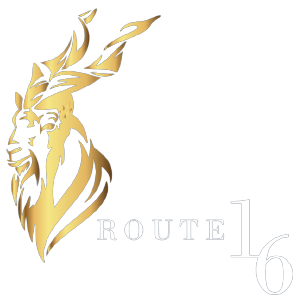Skardu
Land of the mountains
There is no place on earth like Baltistan. It touches your soul. Stark mountains made of rock and stone, peaks covered with glittering white snow and at the foot of these giant mountains are vast tracts of soft fawn colored sand.
While it may not be to everyone’s taste, it’s a must for those who love mountains, with a lot more than 100 magnificent peaks. This is where my soul resides. Let me take you there.
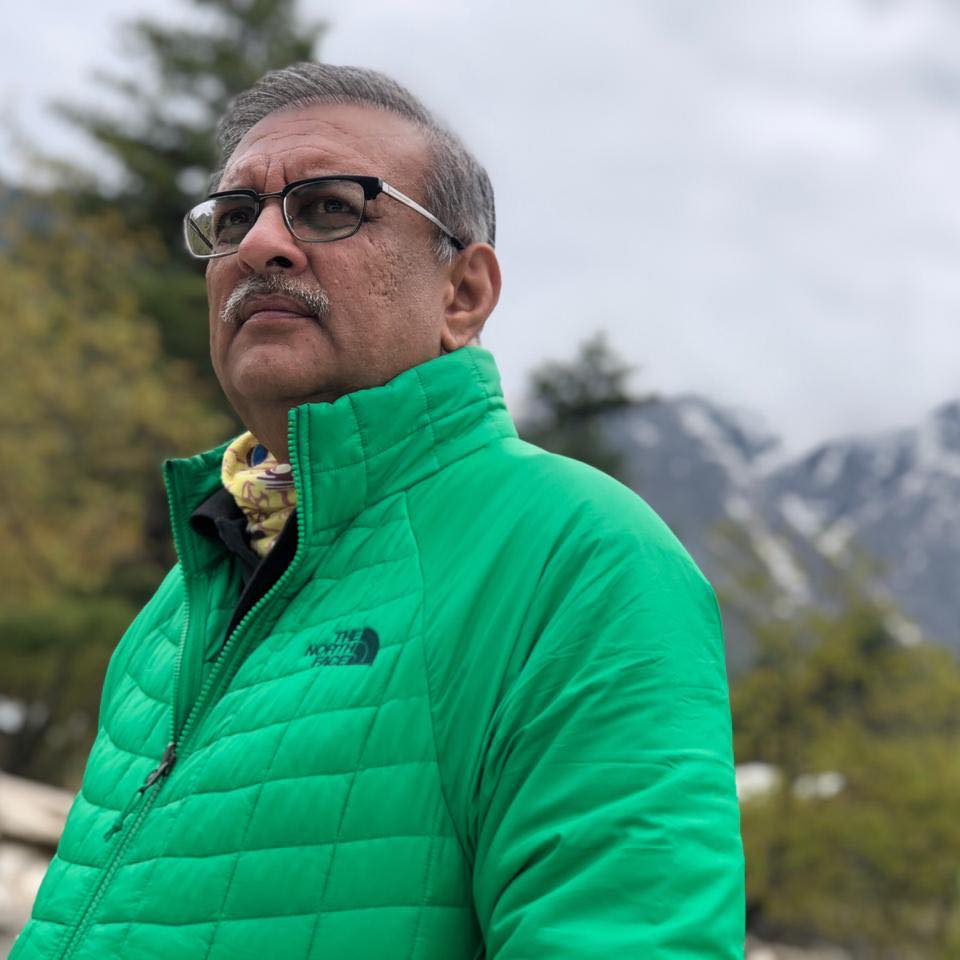
Adnan Afaq
Co-founder
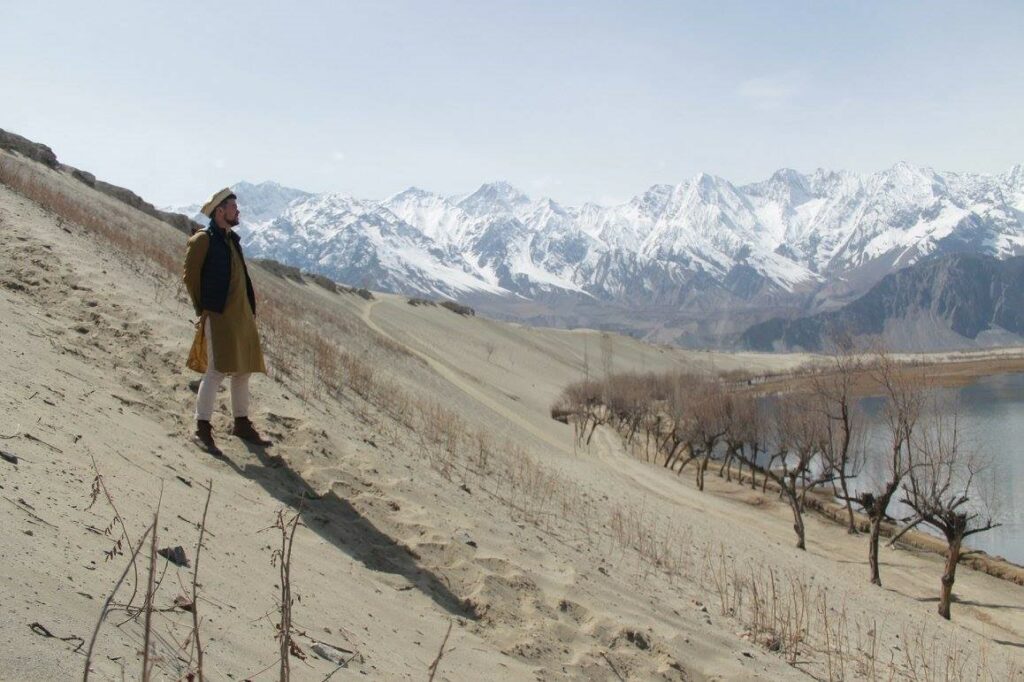
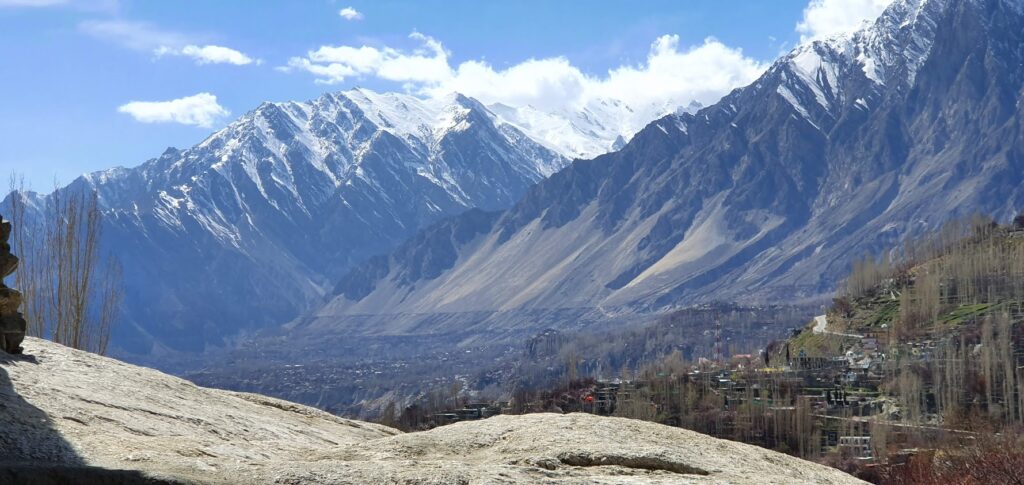
Baltistan - Skardu
Baltistan is a high altitude mountainous region rising from 5,000 feet [1,500 meters] to a loft 28,000 feet [8,600 meters] being the second highest peak in the world – K2.
Stark lofty mountains, rocks, fawn sand and snow – that is Skardu. The steep mountains wherever possible are cut into terraces, irrigated by channels diverting the glacial water. Startling green oases stand out against the gray mountains and fawn sand like emeralds. All in all, the scenery is breathtaking, and at times, can be eerie.
Skardu is the starting point for some of the world’s best treks and mountaineering in the world. There are almost 100 peaks over 23,000 feet [7,000 meters]. No part of the world can even remotely claim this many peaks in a confined space.
Things To Do, See & Shop
For those on a sightseeing leisure holiday, 3 to 7 days is recommended. It is also an ideal place for long stays as from exotic hotels to budget, all are available and there is plenty to do from fishing, spending time on a lake to solitude travel in the desolate Deosai plains. A star studded night full of shooting stars can be the perfect romantic getaway!
Skardu is heaven for climbers and trekkers. Mountains abound from 3,000 meters to 8,000 meters. From a few hours hike to 3/4 weeks exerting treks.
To See
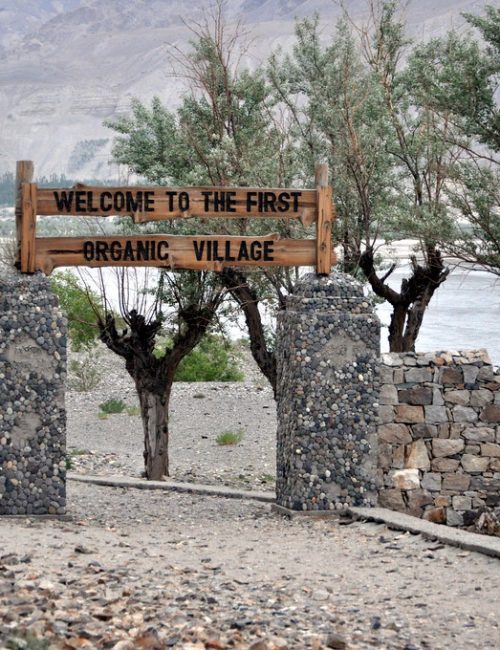
Organic Village
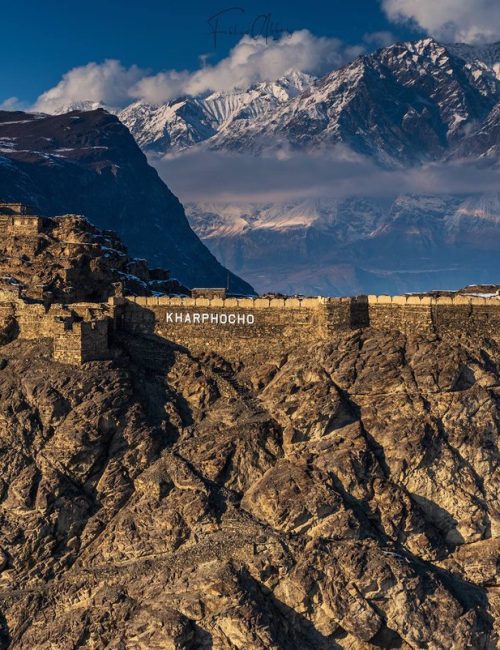
Kharporcho Fort
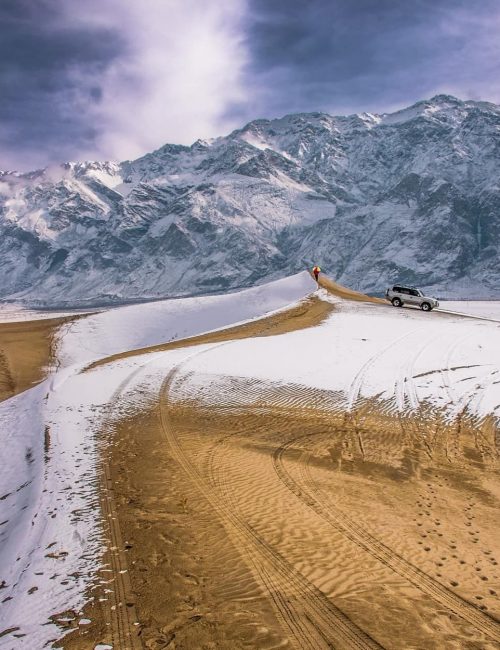
Sarfaranga desert
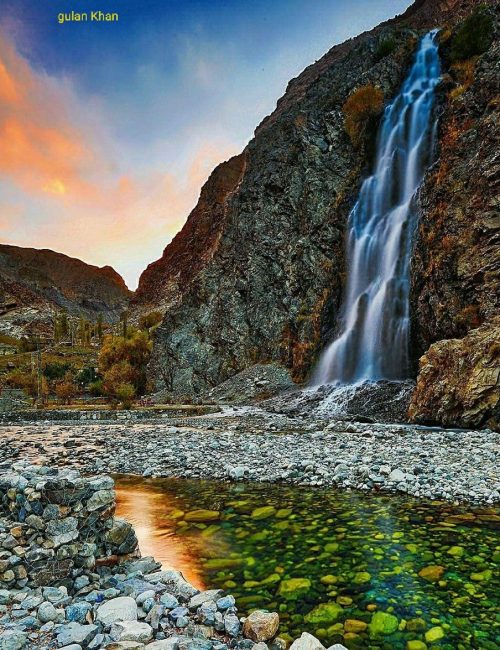
Mantoka Waterfalls
Mantoka waterfalls. A 180 feet waterfall set in lush pastures some 1 hour 45 minutes from Skardu and Shigar while 2 hours and twenty minutes from Khaplu. Trout fish is local restaurant speciality.
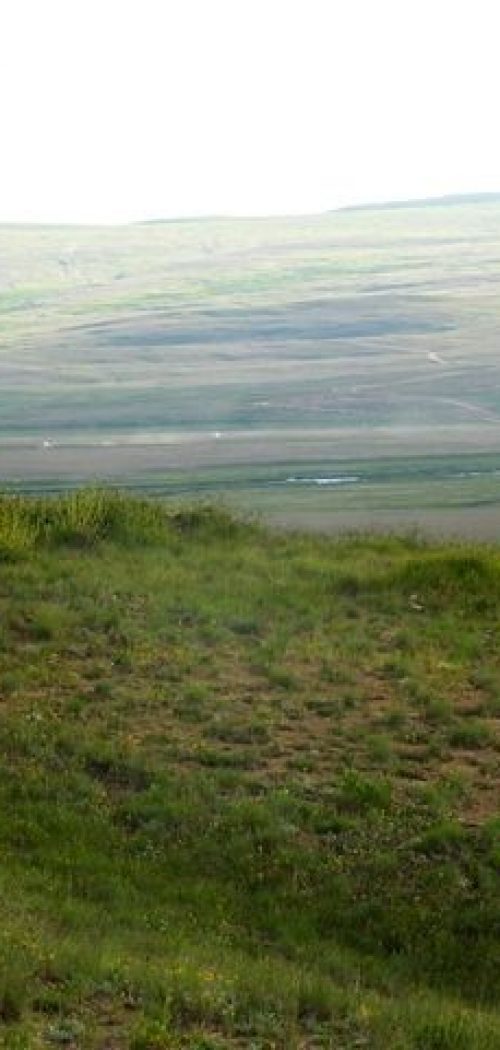
Deosai Plains
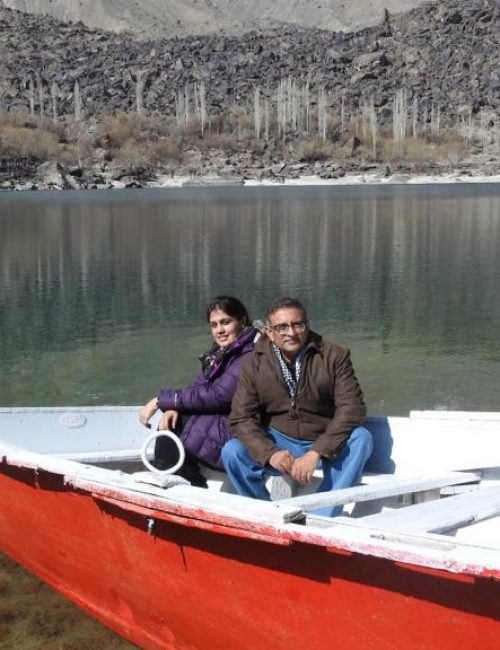
Upper Kachura Lake
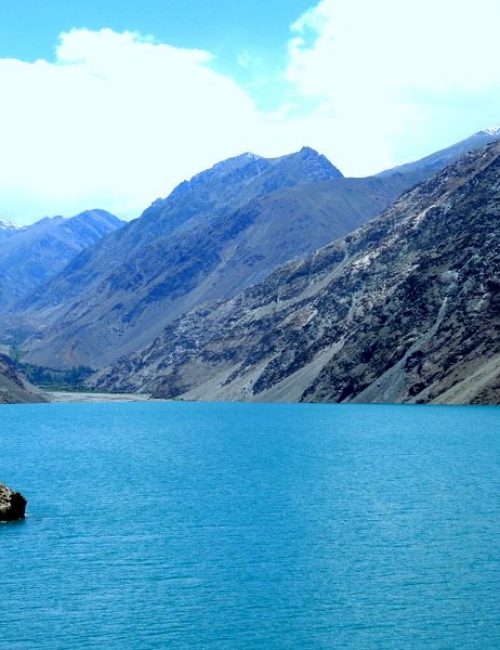
Sadpara Lake
Sadpara Lake [trout fishing & Buddha Rocks] –
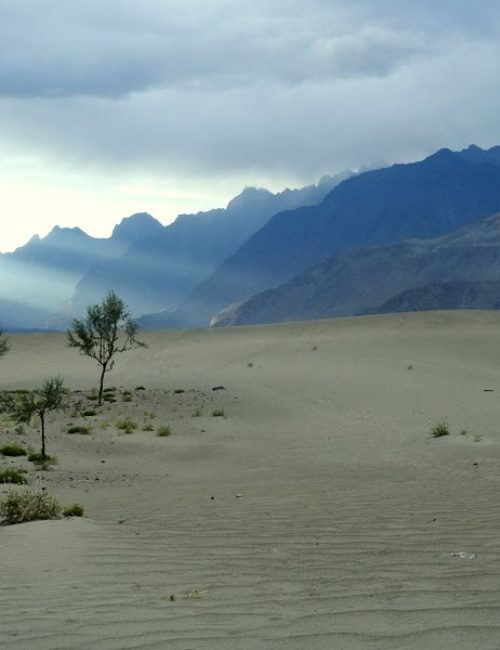
Katpana Desert
To Do - Activities
Hiking - Treks from novice to extreme professional level.
Mountaineering- Rappelling - climbing all levels
Pony and bicycle trails and dune bashing on jeeps.
Rafting and boating
Fishing- April to September
Dune bashing on jeeps
How To Get There
By Road
The drive to skardu beyond Mansehra is a spectacular road trip – a thrilling adventure to say the least. There are high ragged peaks on one side and deep ravine on the other. For most of the journey, the river will snake way below you. It is important to note that this may not be a trip for the faint of hearts or people prone to serious road sickness.
While on this road trip, please always assess distance in time and not kilometers. The road is constantly under repair as an aftermath of rain, snow and landslides and going on such roads is slow and bumpy.
Once off the motorway, the toilet facilities are unkempt and food is basic – available in way side cafes. Cars with low clearing are not recommended for these roads. If you are not on a 4 wheeler, keep your load light to normal as the vehicle can face scratching from the roads.
There are two routes up to Chillas. The KKH which goes via Besham & Dasu is an all-weather road but about 3-4 hours longer (depending on road condition). The other is via Naran over Babusar top. Due to heavy snow, the route is open only in peak summer, normally June to October.
Route16 arranges road trips after checking for road conditions and landslides before the journey begins and arranges for stop over and stays.
| Skardu | Islamabad | Lahore |
|---|---|---|
| Hours - drive time | 14 hrs (via Naran) 16 hrs (KKH) | 18 hrs (via Naran) 22 hrs (KKH) |
| Kilometers | 640 km (via Naran) 725 km (KKH) | 975 km (via Naran) 1,060 km (KKH) |
By Air
There are daily flights to Skardu from Islamabad and several flights a week now operating from Karachi and Lahore during summers. The plane flies on top of a cluster of peaks – a spectacular flight and worth getting a window seat. It takes 2hrs 15 minutes, 1hour and 20 minutes, and 1 hour from Karachi, Lahore and Islamabad, respectively.
All flights are subject to weather and there are frequent cancellations, so be prepared for delays up to a few days. Although flights operate throughout the year the schedule changes and number of flights reduce as tourist season wanes.
Best Time To Go
Best time to go is from mid-March to early November. June, July and August afternoons are hot but flowers are in full bloom in the pastures. Our favorite period is from mid-march to May, then September up to 1st week of November when trees are covered with spring blossom or autumn gold. For trekkers, mid-June to mid-September is best. Trekkers’ high season is August.
Baltistan receives little rain – 8 inches a year – 70% of it is between January to May. Driest season is June and then September to November. Flight certainty is greater when the skies are clear.
Winters are harsh and cold. Despite that, the upcoming trend is to celebrate Christmas & new years in high mountains.
Accommodation
Skardu and vicinity offers a variety of accommodations that we can arrange for you – from spartan hotels where professional mountaineers stay to family run guest houses. There are a few exotic hotel resorts near Skardu which were former rulers’ residences. In addition, we can arrange glamping in spectacular settings for you.
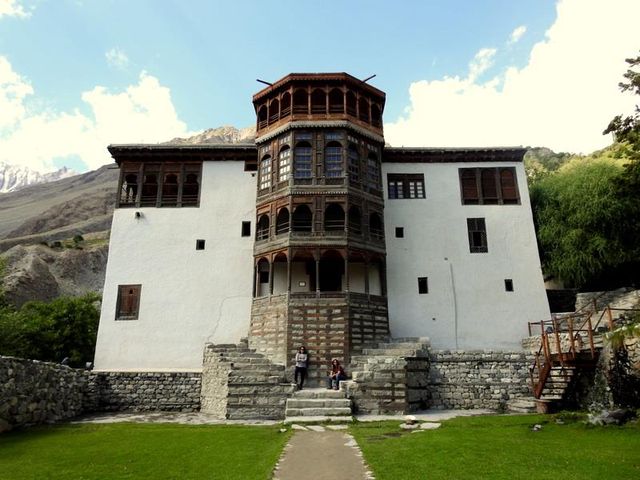

Food
Unlike the food that you get in major cities, the local cuisine is not spicy. Apricot oil and wheat feature strongly in a lot of local dishes and probably resonate with the cold weather. Some popular local dishes include:
- Muskut – made up of walnut paste, mint and other himalayan herbs
- Prapo – a noodle type dish, it is eaten with muskut
- Tras pa – hand-made noodles, served with vegetables or beef, mutton and chicken curry
- Rdung bhalay or kro balay – made up of cooked wheat, mutton, apricot oil, mint and other himalayan herbs
- Marzan – a dish unique to Baltistan and Tibet, made of buckwheat and served with apricot oil.
Fruit in this region is amongst the tastiest in the world and above all organic; apricots, peaches, plums, cherry, mulberry, walnut and almonds.
